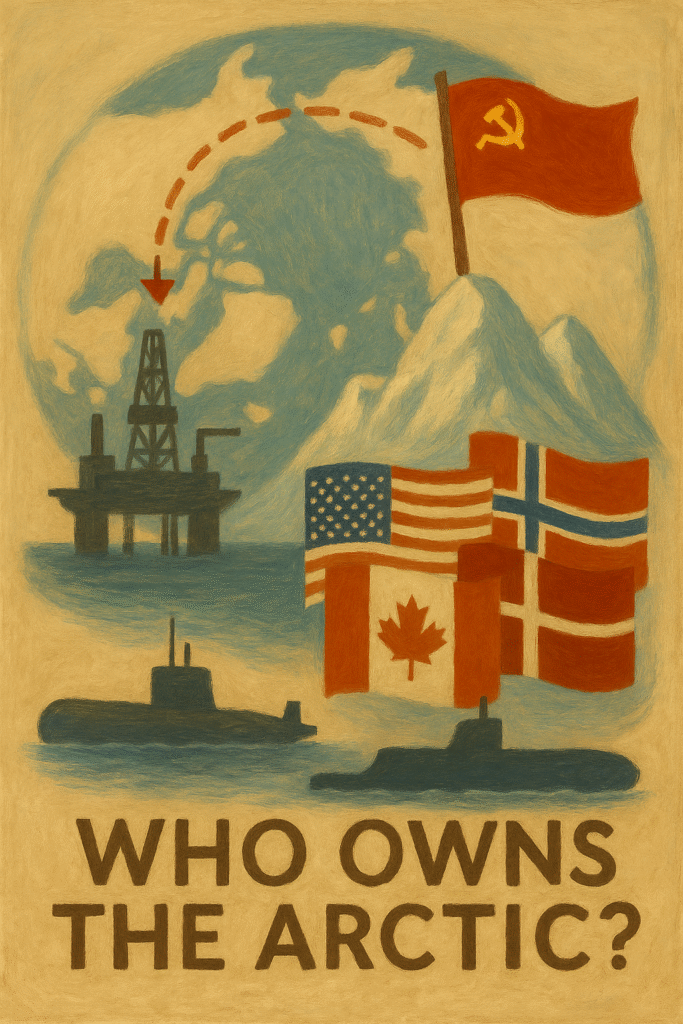The question of who owns the Arctic is a complex mix of geopolitics, territorial disputes, and climate change. As the ice caps melt, new shipping routes and resources are becoming available, intensifying the competition among Arctic nations. Understanding the dynamics of this frozen frontier is essential for grasping today’s international relations.
The Geopolitical Landscape of the Arctic
The Arctic is not just ice; it encompasses important territorial claims and vast natural resources. Currently, eight nations have territories within the Arctic Circle: the United States, Canada, Denmark, Norway, Sweden, Finland, Russia, and Iceland. Arctic sovereignty disputes refer to the overlapping claims these countries make over land and maritime zones.
Key Players in Arctic Ownership
1. Russia: With the largest land mass in the Arctic, Russia has made significant efforts to bolster its presence and expand its territorial claims. The Russian government has invested heavily in Arctic exploration and military capabilities, increasing its influence in the region.
2. Canada: Canada asserts that the Northwest Passage is its internal waters, which is crucial for national sovereignty. Ottawa is focused on protecting its Arctic borders and maintaining the legal status of its maritime claims.
3. United States: The U.S., particularly through Alaska, is strategically positioned in Arctic affairs. However, the U.S. has not formally ratified the United Nations Convention on the Law of the Sea (UNCLOS), which complicates its claims.
4. Denmark: Denmark, through its autonomous territory of Greenland, has been strengthening its claims in the Arctic. This includes ongoing research and military activities to support its sovereignty.
The Stakes: Arctic Resources Exploration
The melting ice is opening new opportunities for Arctic resources exploration. According to recent estimates, the Arctic holds approximately 13% of the world’s undiscovered oil and 30% of its undiscovered natural gas. As countries look to secure these resources, geopolitical tensions are likely to rise.
Potential Resources in the Arctic
* Oil and Natural Gas
* Minerals (e.g., rare earth elements)
* Freshwater resources
* Fisheries
* Shipping routes
Understanding the economic implications of Arctic resources is vital as countries navigate their territorial claims and ownership rights.
Climate Change and Its Impact on Arctic Ownership
Climate change in the Arctic is accelerating the loss of sea ice, which directly affects national sovereignty. Warmer temperatures are altering the landscape, leading countries to reassess their territorial claims and strategies. The geopolitical tensions in the Arctic reflect a changing reality that demands cooperative governance rather than conflict.
Collaborative Solutions for Governance
The future of Arctic governance hinges on collaboration between nations, local communities, and indigenous peoples. The Arctic Council, comprising of Arctic nations, provides a platform for dialogue to address governance issues like environmental protection and sustainable development.
The Role of Treaties and Agreements
International treaties shape Arctic governance by establishing guidelines on resource management and navigational rights. Examples include:
* United Nations Convention on the Law of the Sea (UNCLOS)
* The Arctic Council’s agreements on sustainable development and environmental protection
Conclusion: Who Truly Owns the Arctic?
As the ice retreats, the question of who owns the Arctic becomes increasingly pertinent. While legal frameworks exist, the reality of geopolitics often trends towards might over right. The next few decades will be critical in determining stable governance for this precious region. Close cooperation among Arctic nations and adherence to international law will be paramount.


